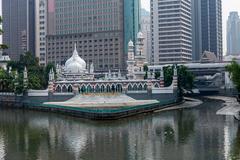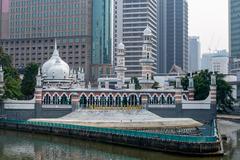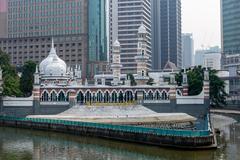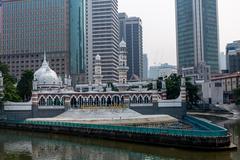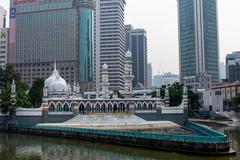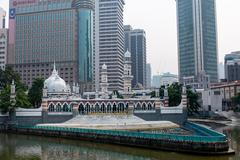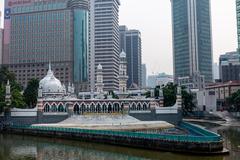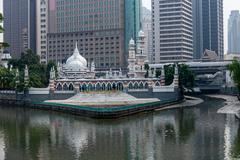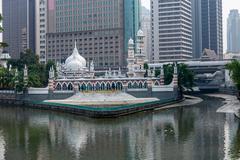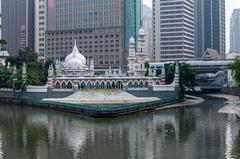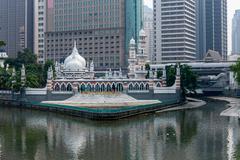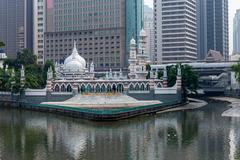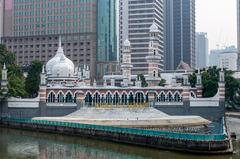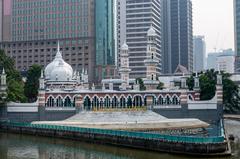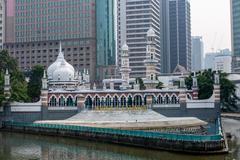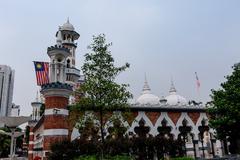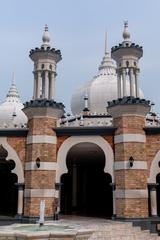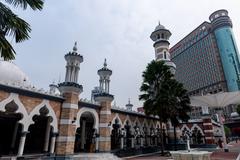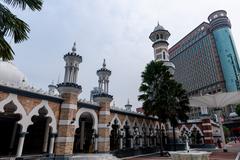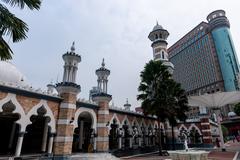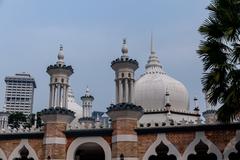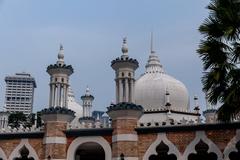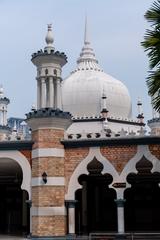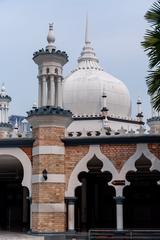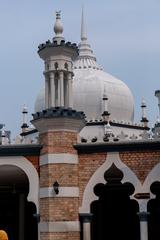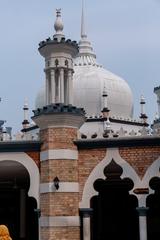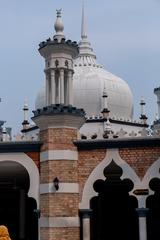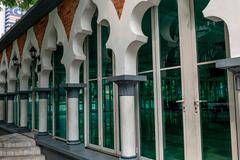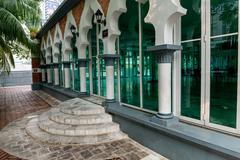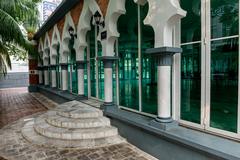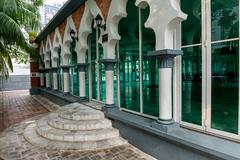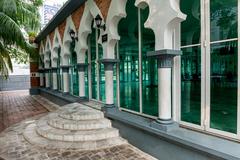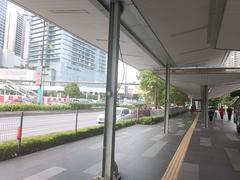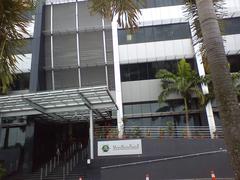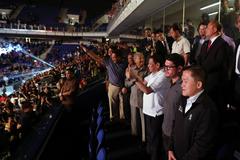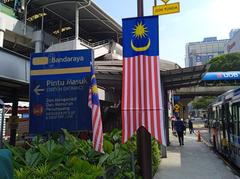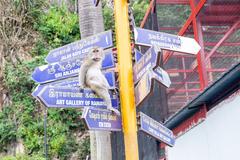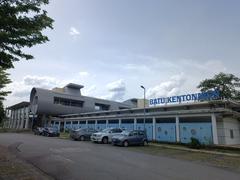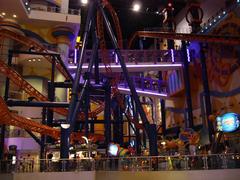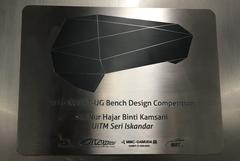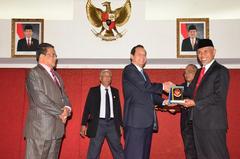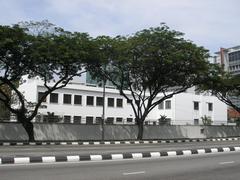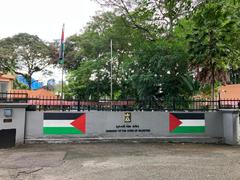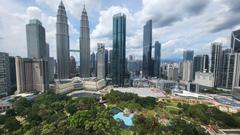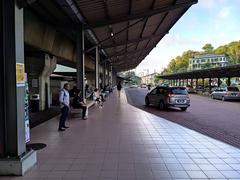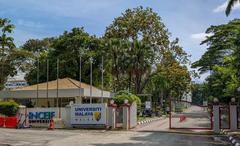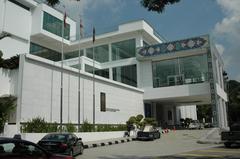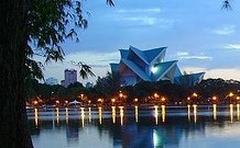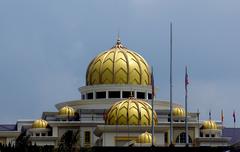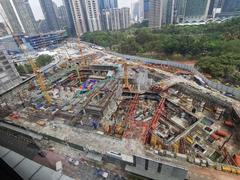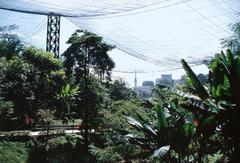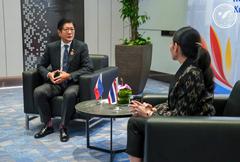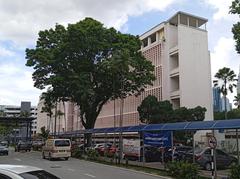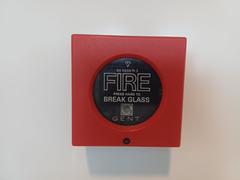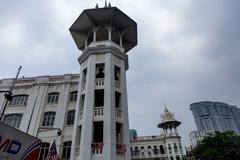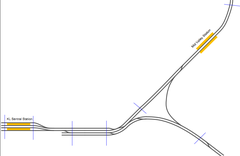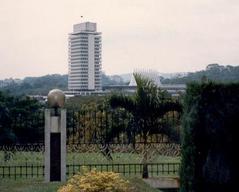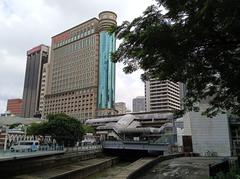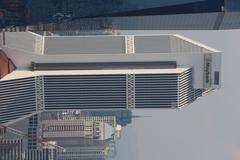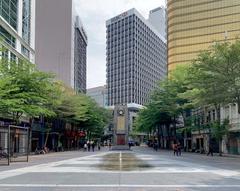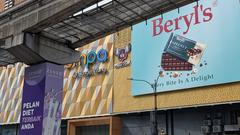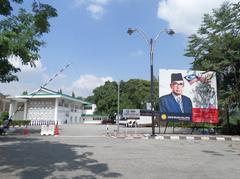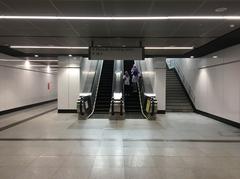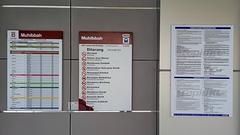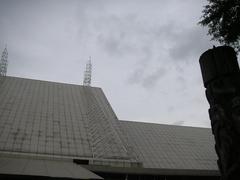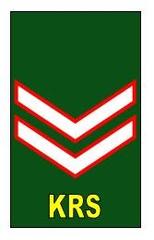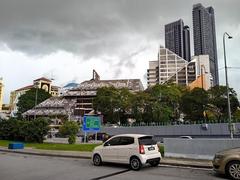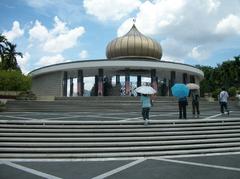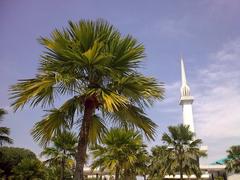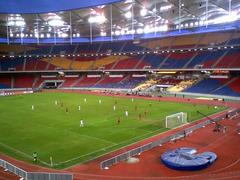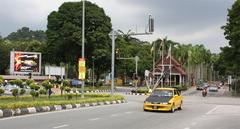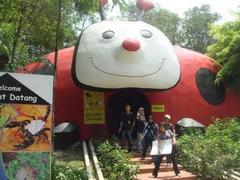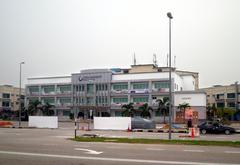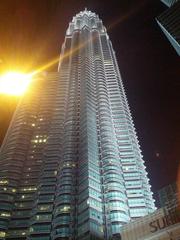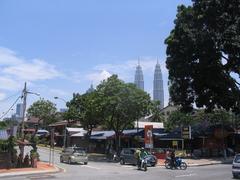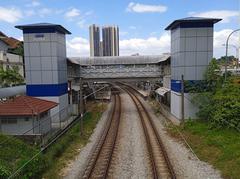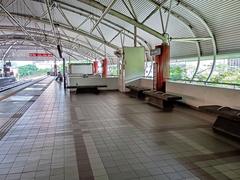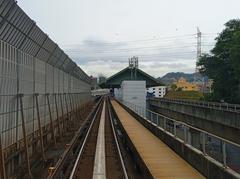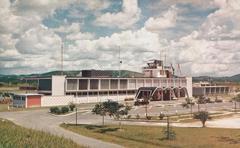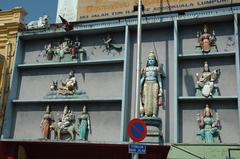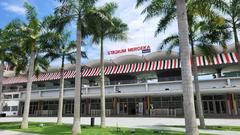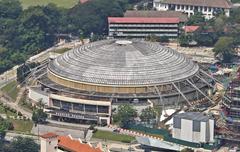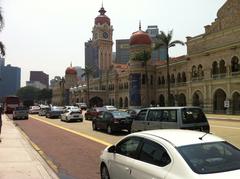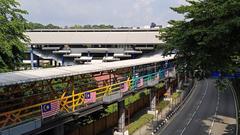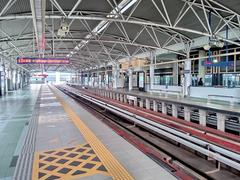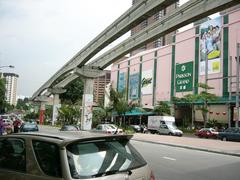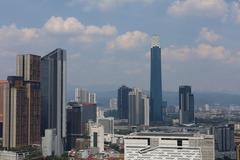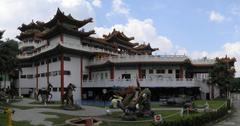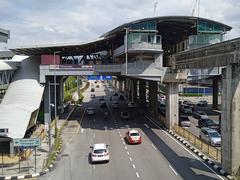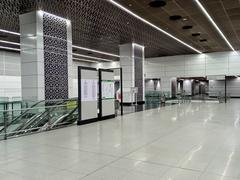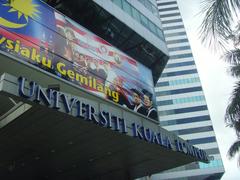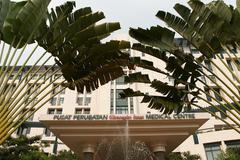
Sultan Abdul Samad Jamek Mosque: Visiting Hours, Tickets, and Kuala Lumpur Historical Sites Guide
Date: 14/06/2025
Introduction
Sultan Abdul Samad Jamek Mosque—commonly known as Masjid Jamek—stands as a keystone of Kuala Lumpur’s history, culture, and religious life. Nestled at the confluence of the Klang and Gombak rivers, Masjid Jamek is not only an architectural marvel but also a living testament to the city’s colonial, multicultural, and spiritual heritage. This mosque is among the city’s oldest and most striking landmarks, welcoming visitors from all walks of life to experience its beauty and significance.
This guide provides comprehensive information on the mosque’s visiting hours, entry policies, and etiquette, alongside historical context, travel tips, accessibility details, and recommendations for nearby attractions. Whether you’re a history buff, spiritual seeker, or cultural explorer, this resource will help you make the most of your visit to Masjid Jamek and Kuala Lumpur’s historic core.
For additional planning resources, visit Ostrich Trails, MalaysiaNow, and Agoda.
History and Architectural Significance
Foundation and Early Development
The mosque was constructed between 1907 and 1909 on the site of Kuala Lumpur’s earliest Malay settlement and a former burial ground. Its location, where the British flag was first raised in 1874, symbolizes both colonial beginnings and enduring Malay heritage. The foundation stone was laid by Sultan Sir Alaeddin Sulaiman Shah, with construction funded by the Federated Malay States government, the Sultan of Selangor, and local community contributions.
Design and Style
Designed by British architect Arthur Benison Hubback, Masjid Jamek exhibits a captivating fusion of Indo-Saracenic, Mughal, Moorish, and local Malay styles. Its red-and-white striped brickwork, onion-shaped domes, horseshoe arches, and minarets echo the grandeur of Indian subcontinent mosques, while local motifs and practical adaptations suit Malaysia’s tropical climate.
Evolution Through the Decades
From its inauguration in 1909, Masjid Jamek served as Kuala Lumpur’s main mosque, replacing smaller neighborhood mosques and acting as a central gathering point for worship and community events. During World War II, it sustained damage but was restored and continued to thrive as a spiritual and social hub. The mosque underwent several renovations, including forecourt roofing and repairs from storm damage, and was recognized as a National Heritage site in 2009. In 2017, it was officially renamed Sultan Abdul Samad Jamek Mosque, honoring its links to the Selangor royal family.
Cultural and Spiritual Role
Masjid Jamek continues to play a vital role in Kuala Lumpur’s religious and civic life. It hosts the five daily prayers, large Friday congregations, and special services during Ramadan and other Islamic festivals. The mosque is also a site for religious education, interfaith dialogues, and community outreach programs, fostering social cohesion and cultural understanding in Malaysia’s multicultural society.
Its open-door policy welcomes both Muslims and non-Muslims, promoting inclusivity and intercultural exchange (MalaysiaNow).
Practical Visitor Information
Location and Accessibility
- Address: Jalan Tun Perak, 50050 Kuala Lumpur, Malaysia
- Public Transport: Adjacent to Masjid Jamek LRT station (Kelana Jaya and Ampang/Sri Petaling lines), making it easily accessible from anywhere in the city.
- Walking Distance: Minutes from Merdeka Square, Sultan Abdul Samad Building, Chinatown, and Central Market (Ostrich Trails; Nasha Planeta).
Visiting Hours (as of June 2025)
- Non-Muslim Visitors:
- Morning: 8:30 AM – 12:30 PM
- Afternoon: 2:30 PM – 4:30 PM
- Closed to tourists during Friday prayers and major religious events
- Muslim Visitors:
- Open during all prayer times
(Ostrich Trails; Nasha Planeta)
Entry Fees
- Admission: Free for all visitors; no tickets required. Donations are appreciated but not compulsory.
Dress Code and Etiquette
- Men: Long trousers and sleeved shirts required
- Women: Long skirts or trousers, long-sleeved tops, and a headscarf
- Loaner Attire: Free gowns and scarves available at the entrance for those not dressed appropriately
- Shoes: Must be removed before entering prayer areas
- Behavior: Maintain silence and respect, especially in prayer halls
- Photography: Permitted in courtyards and exteriors; ask before photographing inside or during prayers (Ostrich Trails; MalaysiaNow)
Facilities and Amenities
- Restrooms and Ablution Areas: Clean and accessible
- Multilingual Information Boards: Offer historical and architectural context
- Reception and Volunteers: Ready to answer questions and offer informal tours
- Wheelchair Access: Ramps and accessible restrooms are available, though some historic areas may have uneven surfaces
(Trip.com)
Guided Tours and Cultural Interpretation
While formal guided tours are not always scheduled, staff and volunteers often provide insightful explanations about the mosque’s significance. Many local walking tours of Kuala Lumpur’s heritage district include Masjid Jamek as a key stop (Ostrich Trails).
Architectural Highlights
- Onion-shaped Domes and Arched Colonnades: Signature elements of Indo-Saracenic and Mughal styles
- Red-and-White Brickwork: Distinctive, photogenic, and practical for Malaysia’s climate
- Minarets: Tall and elegant, visible from across the city center
- Riverfront Setting: Offers beautiful sunrise and sunset views, especially along the revitalized River of Life promenade
Suggested visual: High-quality image of Masjid Jamek’s domes and minarets with the Klang River in the foreground.
Nearby Historical Attractions
Masjid Jamek is ideally located for exploring other landmarks of Kuala Lumpur’s heritage district:
- Merdeka Square (Dataran Merdeka): Site of Malaysia’s independence declaration
- Sultan Abdul Samad Building: A Moorish-style administrative landmark
- National Textile Museum: Insights into Malaysia’s textile traditions
- River of Life: Scenic riverside promenade with views of the mosque and city skyline
- Chinatown (Petaling Street): Bustling market area with street food and culture
Special Events and Best Times to Visit
- Islamic Festivals: The mosque is especially atmospheric during Ramadan and Hari Raya Aidilfitri, though access may be restricted due to large congregations.
- Photography: Early morning and late afternoon are ideal for soft lighting and fewer crowds.
- Safety: The area is well-patrolled, tourist-friendly, and safe for visitors at all open hours.
(Trip.com)
Frequently Asked Questions (FAQ)
Q: What are the visiting hours for non-Muslims?
A: 8:30 AM – 12:30 PM and 2:30 PM – 4:30 PM, closed during Friday prayers and religious events.
Q: Is there an entry fee or ticket required?
A: No, entry is free for all.
Q: What is the dress code?
A: Modest attire—long trousers and sleeves for men; long sleeves, long skirts or trousers, and a headscarf for women. Loaner attire is available.
Q: Are guided tours available?
A: Informal explanations are provided by staff and volunteers; some local walking tours include the mosque.
Q: Is the mosque accessible for visitors with limited mobility?
A: Yes, the main entrance is accessible, though some historic areas have steps.
Travel Tips for a Meaningful Visit
- Schedule your visit within the designated hours for tourists.
- Dress modestly or use the free loaner attire provided.
- Bring a camera for exterior shots; always ask before photographing inside.
- Combine your visit with nearby heritage attractions for a deeper cultural experience.
- Respect all customs and the mosque’s sanctity.
For more details and the latest visitor guidelines, check the mosque’s official social media or local tourism websites (Trip.com).
Enhance Your Visit: The Audiala App
Download the Audiala app for audio guides, walking tours, and insider tips on Kuala Lumpur’s historical sites, including Masjid Jamek. The app helps you navigate, learn, and immerse yourself in the city’s rich heritage.
Suggested visual: Screenshot of Audiala app showing an audio guide for Sultan Abdul Samad Jamek Mosque.
Summary and Recommendations
Sultan Abdul Samad Jamek Mosque is a cornerstone of Kuala Lumpur’s cultural and architectural landscape. Its blend of historical depth, spiritual vibrance, and accessibility make it a must-visit site for anyone interested in Malaysia’s heritage. Plan your visit during open hours, respect the dress code, and explore the surrounding district for a comprehensive cultural experience. For further information and inspiration, consult trusted sources such as Trip.com, Nasha Planeta, and Ostrich Trails.
Further Reading and Official Sources
- Ostrich Trails: Kuala Lumpur Walking Tour and Masjid Jamek Guide
- Agoda: Exploring the Iconic Jamek Mosque in Kuala Lumpur
- MalaysiaNow: A Quick Tour of Malaysia’s Dazzling Mosques
- Trip.com: Sultan Abdul Samad Jamek Mosque Tips
- Nasha Planeta: Masjid Jamek Kuala Lumpur Guide
